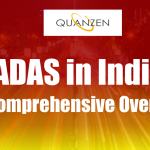While the shadow of the second wave of COVID 19 is hovering over, as always, humans across the globe have got used to living with the virus. The only definite solution to COVID 19, a vaccine, would be available at least a few months away and it will need a couple of years to be available for everyone. Even though the situation seems to be quite uncertain and difficult to predict, most of the economies are headed towards the pre-COVID normal; India is no exception.
Sales of automobiles – two wheelers and four wheelers (PVs, CVs, Tractors etc.) took a severe hit because of the lockdown and the resultant economic shock and almost all the manufacturers either stopped production or ran their factories at much lower output rates. Right now, we are somewhere near the middle of November and the way things look now is much better than what we had anticipated when the lockdown was started.
The car sales in India started rising during the month of August and most of the manufacturers upped their sleeves and increased their production. In fact, Passenger vehicle sales expanded in double digits for the first time in nearly two years in August.
Society of Indian Automobile Manufacturers (SIAM) data indicated that 215,916 passenger vehicles were sold in October 2020, an increase of more than 14% from a year earlier.
“We are beginning to observe growth which is instilling confidence back into the industry, especially in the two-wheeler and the passenger vehicle segments,” SIAM president Kenichi Ayukawa, also the MD and CEO of Maruti Suzuki India ltd. said.
Similar is the story with the sales of tractors. Addressing the pent-up demand, rise in rural sales on account of robust monsoon and harvest led to record sales of vehicles at the beginning of the festive season. Many car makers, independent research organisations and associations had to relook at their own earlier forecasts as these increased numbers were a surprise. In this article, we take a closer look at the happenings in the Indian automotive market and what outlook manufacturers and research organisations hold about the automobile market in the near future.
What’s happening in the Indian Automobile Market?
As per the data released by SIAM, car sales rose 28.92% to over 163 thousand units in September 2020 from about 127 thousand units in September 2019, sales of utility vehicles and vans also saw double digit YoY growth in September 2020.
September also witnessed robust growth in two-wheeler sales, which grew 11.64% to over 1.85 million units as against over 1.65 million units in the same month last year. Data showed a YoY growth of 17.30% for motorcycles to over 1.22 million units. The scooter sales also crossed the half million mark.
If we further analyse the PV sales for the month of October, some interesting insights are brought up. Compact SUVs can be said to be fastest growing segment and has registered a significant growth of 60% over the same month last year. The sales have boomed from 33,225 units to 53,111 units. Brands like Kia, Hyundai and Mahindra majorly contributed to this growth.
The premium hatchback segment which also registered a decent sales increase of 18% over last year (43,132 units sold in Oct. 2020 against 36,612 units in Oct. 2019.) It also landed up being the 3rd largest category of cars sold in India.
Following table from Rushlane shows YoY growth for different segments for the month of October.
As it can be seen, the trend of increasing sales, which started in August 2020 got further strengthened in October 2020. As Puneet Gupta, associate director of IHS Markit remarked, to copy with the Bharat Stage 6 emission norms, most of the manufacturers increased car prices and October sales numbers are very encouraging. “While aggressive financing schemes are helping buyers, Covid-19 fear factor is clearly working in India, as we see an increased preference for personal mobility,” he said.
If we look at the numbers for October 2020 automaker wise, the highest growth was witnessed by Tata Motors (79.33%) followed by Kia Motors (64%) and MG Motors (48%). MSIL also logged in a double-digit growth of 17.63%. For Hyundai, although the growth was only 8.85%, it recorded highest ever domestic monthly sales – 56,605 units. Honda also registered a growth of 8.25%.
The table below from Autocar summarises manufacturer wise YoY growth for the month of October.
What is driving this bounce back of Indian Automotive Market?
While the numbers are clearly explaining ‘what’ is happening in the Indian market, to get a better understanding of the ‘how’, we went through the official statements and interviews of executives of the automakers and various news articles. The increased car sales are a confluence of four factors : Festive season, Healthy monsoon and harvest, Addressing the pent up demand and Increasing preference to private means of transport due to COVID 19.
Tarun Garg, director, marketing and sales, Hyundai Motor, remarked that due to the confusion related to transition from BS 4 to BS 6 emission norms consumers have been postponing buying which lead to pent up demand.
“Sales in October was the highest for us and there is high pent-up demand in the market. We had around 30% year on year growth in sales during Navratri and Diwali should be equally good”, he said in a statement.
“For Mahindra, the festive season has started on a positive note with deliveries and bookings being higher than last year,” Veejay Nakra, CEO of the company’s automotive division, said in a press release.
Rakesh Sidana, Director – Sales, MG Motor India, said, “With festive demand, we have registered 48% growth vis-à-vis last month. We expect continued traction because of Diwali in November and are ramping up supplies to cater to the increasing demand.”
Martin Schwenk, managing director & CEO, Mercedes-Benz India said “The festive season this year has begun on a very strong note and Mercedes-Benz India is glad to witness this positive customer sentiment. The company is delighted to share the unlocking of the aspirations and celebrations by its customers who drove home a Mercedes this festive season,”.
Commenting on the sales performance, Rajesh Goel, Sr. Vice President and Director, Marketing & Sales, Honda Cars India said, “We have seen positive sales momentum in line with market sentiment and our October results have been as per our plan. The festive buying picked up from Navratra in mid- October and we are focusing on maximizing deliveries during this period.
Naveen Soni, senior vice president, sales and service, Toyota Kirloskar said “Our wholesales have been registering an average growth of close to 50% every month giving us confidence that the demand for bigger vehicles is rising too,”.
“Despite the slowdown caused by the pandemic, this year’s festive season has already begun on a positive note for the company. Our market share has already doubled after the first quarter of this financial year to 9.5 per cent, as compared to same time last year,” Tata Motors Passenger Vehicle Business Unit Head, Marketing Vivek Srivatsa said. It is interesting to note that Tata Motors registered 103% growth in vehicle bookings during this Navaratri compared to the last one. Shailesh Chandra, President, Passenger Vehicles Business Unit, Tata Motors said, “In September 2020, wholesales were higher than retail ahead of the festive season.
Kookhyun Shim, Managing Director and Chief Executive Officer, Kia Motors India, said that the Indian auto market is recovering at a better-than-expected pace and the sales are happening as per the plan.
Speaking to Moneycontrol, Zac Hollis, brand director, Skoda Auto India, said, “We have pending booking orders of 1,500 units mostly for the Rapid. We have not seen this kind of a demand since 2018.”
All of these statements very clearly convey the positive sentiments on which the Indian auto market is riding.
Statements from other individual organisations and institutions:
A similar sentiment has been expressed by numerous private research institutions and organisations. Ashish Modani, vice president, ICRA, a full-service credit ratings agency in a statement said, “The domestic PV industry is on a recovery path and healthy volume growth, September 2020 as well as Navratri, reflect the same. Discount level has also eased across OEMs, indicating enquiries as well as improved conversion, especially in the entry level and compact UV segment,”.
According to FADA, presence of rural demand has translated into good sales for small cars. On the other hand, a slew of new high-profile car launches has contributed to a growth in demand from the urban areas.
Mitul Shah, Vice President (Research), Reliance Securities said, “Monthly volume performance by most automobile companies are encouraging with healthy rural sales and revival from urban markets recently. Passenger vehicles and two-wheeler segments already started witnessing Y-o-Y growth with decent enquiries and bookings. Moreover, improving sentiment, favourable monsoon, higher agricultural output, have all contributed.”
As mentioned earlier in this article, the four factors – Favourable monsoon, Pent-up demand, Preference to personal mobility and Festive season have created the firm ground for the post-COVID bounce back of the automobile dales in India. We expect this trend to continue further leading to a very strong recovery of the automobile sector.
If you want to know more, contact sudhir.nerurkar@quanzen.com






